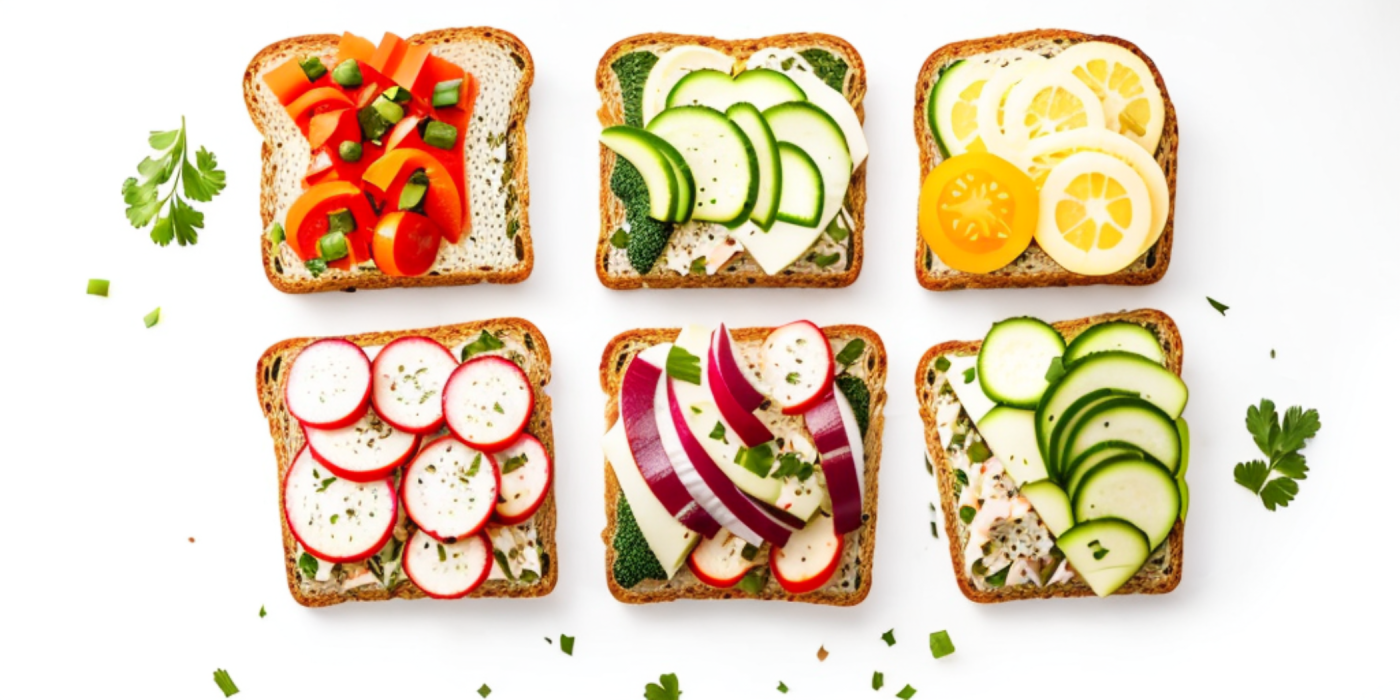Belly Fat Diet: Your Guide to Healthier Waistlines and Improved Wellbeing

The quest for a healthier lifestyle often begins with an understanding of one's body and the factors that contribute to overall health. Central to this is the study of body fat and its various forms, particularly belly fat, which poses several health risks that are often overlooked.
Understanding Belly Fat and Its Health Implications
Belly fat, clinically referred to as visceral fat, is more than just a nuisance that makes your clothes feel tight. This type of fat, wrapped around your internal organs, is significantly more dangerous than the fat that sits just beneath your skin (subcutaneous fat).
The Science Behind Belly Fat
Belly fat doesn't just stay put; it's active. It produces hormones and other substances that can profoundly affect our health. Excess belly fat is linked to serious health problems, such as type 2 diabetes, heart disease, and even certain types of cancer. Reducing belly fat isn't just about looking good; it's about improving your long-term health and wellbeing.
Overview of the Article's Aim and Structure
This article aims to shed light on the diet that could help reduce belly fat. It's not about promoting quick fixes or fad diets, but about establishing a long-term, sustainable approach to healthier eating and living.
What to Expect
We'll delve into the science of belly fat, explore the principles of a belly fat reducing diet, and learn about the foods that should feature in your meals. Additionally, we'll talk about foods to avoid and the role of exercise in this journey. Real-life success stories will inspire and motivate you along the way. By the end of this article, you'll be equipped with practical knowledge to embark on a healthier, fitter lifestyle.
The Science of Belly Fat
Understanding Types of Fat: Subcutaneous vs. Visceral
Belly fat, or abdominal fat, is typically a mixture of two different types of fat: subcutaneous and visceral. Subcutaneous fat lies just under the skin and is the type you can pinch. Although not ideal, it's less harmful than its counterpart, visceral fat. Visceral fat, on the other hand, is nestled deeper, surrounding vital organs like the liver, heart, and intestines. This is the 'dangerous' type of fat due to its proximity to these organs and the active role it plays in the body's metabolic processes.
Health Risks of Excess Belly Fat
Excess belly fat is far more than an aesthetic concern; it's a significant health issue. It has been linked to a multitude of health problems, including type 2 diabetes, heart disease, high blood pressure, and certain types of cancer. Specifically, the presence of excess visceral fat can lead to a state of chronic inflammation, negatively impacting the body's insulin resistance and contributing to the development of various metabolic disorders.
The Role of Diet in Managing Belly Fat
Diet plays a critical role in the management of belly fat. While exercise can help burn calories and build muscle, it's your diet that largely determines how much fat your body stores or burns. Consuming a balanced diet rich in lean proteins, whole grains, fruits, and vegetables can significantly reduce belly fat. Likewise, limiting intake of processed foods, sugars, and unhealthy fats can help prevent the accumulation of visceral fat. The essence of a 'belly fat diet' isn't about starving oneself; rather, it's about making healthier food choices and creating sustainable eating habits that support overall wellbeing.
Fundamentals of a Belly Fat Diet
Basic Principles of a Belly Fat Reducing Diet
Fundamentally, a diet aimed at reducing belly fat doesn't revolve around a miraculous food or potion, but instead follows the principle of energy balance. The key is to consume fewer calories than your body burns in a day, hence promoting weight loss, particularly from stubborn areas like the belly.
Importance of Balanced Nutrition
Balanced nutrition should form the cornerstone of any diet, including one targeting belly fat. A varied diet full of different food groups ensures your body gets the nutrients it needs to function properly. This means incorporating lean proteins, whole grains, fruits, vegetables, and healthy fats in your meals. It's a common misconception that all fats should be avoided; in reality, healthy fats found in foods like avocados, oily fish, and nuts can actually aid weight loss.
Role of Portion Control and Mindful Eating
Eating the right foods is crucial, but equally important is how much you're eating. Even the healthiest foods can contribute to weight gain if eaten in excess. This is where portion control comes into play. Using smaller plates, checking serving sizes, and being mindful of hunger and fullness cues can help prevent overeating.
Furthermore, mindful eating – truly savouring and focusing on your food – can not only enhance your dining experience but also make you more aware of what and how much you're eating. It's about eating without distractions, chewing thoroughly, and learning to differentiate between physical hunger and emotional cravings.
Implementing these basic principles can make a significant difference in your journey to reduce belly fat, leading to a healthier and happier you.
Foods to Include in a Belly Fat Diet
A. Nutrient-Dense, Fat-Burning Foods
A balanced diet plays an integral part in managing belly fat. Prioritising nutrient-dense, fat-burning foods can lead to healthier waistlines.
Whole Grains
Whole grains like oats, brown rice, and wholemeal bread are rich in fibre, promoting a feeling of fullness and reducing the risk of overeating.
Lean Proteins
Lean proteins such as chicken, turkey, tofu, and fish aid in muscle building, thereby increasing metabolic rate and fat burning.
Fruits and Vegetables
Fruits and vegetables are packed with essential vitamins, minerals, and fibre that aid in weight management. Leafy greens, berries, and citrus fruits are particularly effective.
B. Impact on Belly Fat
Each of these food groups plays a unique role in combating belly fat. Whole grains maintain healthy digestion and prevent fat storage. Lean proteins boost metabolism, aiding fat burning. Fruits and vegetables, with their high fibre content, contribute to a feeling of satiety and provide essential nutrients with fewer calories.
C. Recipe Ideas Incorporating These Foods
Transforming your diet doesn't need to be a chore. Simple changes can yield significant results.
Breakfast
A bowl of whole grain porridge topped with berries provides a healthy, filling start to the day.
Lunch
A salad loaded with leafy greens, a lean protein source, and a whole grain like quinoa will keep you satisfied without feeling overly stuffed.
Dinner
For dinner, consider grilled fish served with a side of steamed vegetables and brown rice.
Remember, a belly fat diet is about maintaining balance and enjoying your meals, not deprivation.
Foods to Avoid or Limit
Understanding Food's Impact on Belly Fat
Despite the numerous benefits of certain foods, there are many others that contribute to increased belly fat. These typically have high amounts of sugars, unhealthy fats, and processed ingredients. Understanding these food types and their impact on body fat can help you make more informed dietary choices.
High Sugar Foods and Beverages
Food items high in added sugars, such as sweets, chocolates, cakes, and fizzy drinks, significantly contribute to belly fat. These sugars get quickly absorbed by your body, causing blood sugar spikes and leading to weight gain. Moreover, sugary beverages like soft drinks, energy drinks, and even fruit juices are often high in calories and low in nutritional value.
Processed Foods
Processed foods like chips, baked goods, ready-made meals, and fast food are often high in trans fats and saturated fats. Consuming these foods can lead to an increase in belly fat as these types of fats are harder for your body to break down and use for energy.
Alcohol
While moderate alcohol consumption may have certain health benefits, excessive intake is harmful. Notably, high alcohol consumption can lead to a 'beer belly' as it is calorie-dense and often consumed without regard to portion control.
Tips to Reduce Consumption
Cutting out these foods can be difficult, especially if they form a significant part of your current diet. However, a few helpful strategies include swapping sugary drinks for water or unsweetened tea, choosing whole foods over processed ones, and limiting alcohol consumption. Remember, gradual changes are more sustainable, so take one step at a time towards a healthier diet.
Incorporating Physical Activity into Your Routine
Just as crucial as a well-balanced diet, regular physical activity plays a pivotal role in managing belly fat. It's essential to comprehend that whilst adjusting your diet is a significant step towards reducing belly fat, combining it with regular exercise can accelerate your progress and contribute to your overall health.
The Role of Exercise in Complementing a Belly Fat Diet
Exercise isn't merely about burning off the excess calories. It is, more importantly, about improving your metabolism, reducing visceral fat, and enhancing muscle tone, which can lead to a more defined waistline. Regular physical activity also supports your cardiovascular health, thereby lowering the risks associated with excessive belly fat, such as heart disease and type-2 diabetes.
Suggested Exercises and Their Benefits
Whilst all types of exercise offer health benefits, some are particularly effective in targeting belly fat. Aerobic exercises, like brisk walking, swimming, or cycling, are excellent for burning calories. High-Intensity Interval Training (HIIT) routines, on the other hand, are renowned for their effectiveness in visceral fat reduction. Strength training helps build lean muscle mass, which boosts your metabolism and aids in fat loss.
The Balance Between Diet and Physical Activity
Remember, the key to a healthier waistline is not solely a diet or exercise, but a harmonious balance between the two. It's a combination of consuming nutritious, portion-controlled meals and staying active regularly. The occasional indulgence won't hamper your progress as long as you maintain a consistent exercise routine. However, skipping your workouts while adhering to a strict diet can also halt progress. Aim for consistency in both your diet and physical activity for optimal results.
In conclusion, incorporating regular exercise into your routine can significantly enhance your belly fat diet efforts. It’s not only about aesthetics, but more so about embracing a healthier, more active lifestyle.
Real-Life Success Stories
Lending authenticity to our discourse are real-life success stories from individuals who have successfully managed to reduce belly fat through dedicated dietary changes. These stories serve to inspire, educate, and provide practical advice to those embarking on a similar journey.
From Beer Belly to Six-Pack: Paul's Journey
Paul, a 38-year-old computer programmer from Bristol, realised his sedentary job and frequent visits to the pub had caused an alarming growth in his waistline. Determined to turn things around, he decided to adopt a healthier diet and lifestyle.
"I started with simple swaps," he shares, "from crisps to almonds for snacks, from beers to sparkling water. It wasn't easy, but being consistent helped a lot."
Paul also focused on portion control, ensuring he was getting a balance of lean proteins, fruits, vegetables and whole grains. Within six months, Paul had lost a substantial amount of belly fat and gained a newfound energy and confidence.
The Power of Perseverance: Jane's Transformation
Then there's Jane, a 45-year-old mother of two from Manchester, who battled post-pregnancy weight gain. Despite numerous failed attempts, Jane never gave up.
"I realised it wasn't about quick fixes, but rather long-term changes," Jane explains. She started incorporating more fibre-rich foods, lean proteins, and reduced her intake of processed foods and sugars.
These dietary changes, coupled with regular exercise, helped Jane to lose her belly fat. She emphasises, "The most crucial part of my journey was the support from my family and staying positive throughout. It's a journey, not a race."
These stories remind us that while everyone's journey is unique, a balanced diet and a consistent approach are key to reducing belly fat and improving overall health.
A Recap of Essential Points
In essence, our exploration of the belly fat diet has underscored the critical role that diet plays in managing abdominal adiposity. We've delved into the science of belly fat, distinguishing between subcutaneous and visceral fat types, and outlined the health hazards linked with excess abdominal fat. We've provided a blueprint for a belly fat diet, emphasising the necessity for balanced nutrition, portion control, and mindful eating.
We've highlighted nutrient-dense, fat-burning foods that should be integrated into your daily diet, and conversely, pinpointed foods that are known to contribute to belly fat that should be minimised. Alongside this dietary guidance, we've underscored the complementing role of physical activity in any effective belly fat reduction regime.
Lastly, we've shared heartening real-life stories of individuals who have successfully trimmed their waistlines, serving as living testament to the efficacy of the belly fat diet when combined with regular exercise.
Adopting a Healthier Lifestyle
In conclusion, tackling belly fat extends far beyond aesthetics. It's about making long-term lifestyle adjustments that not only help you lose that stubborn belly fat but also significantly improve your overall health and wellbeing. The belly fat diet isn’t a quick fix; it's a sustainable approach to eating that prioritises nutrient-rich foods while reducing the intake of those that contribute to fat storage.
Remember, every journey begins with a single step. So why not start today? Replace one unhealthy food in your diet with a healthier alternative. Take a short walk, and gradually increase your physical activity. Every small change can contribute to a healthier, happier you.
Here's to your health, and to the exciting journey towards a trimmer waistline and improved wellbeing that lies ahead. Good luck, and remember: a healthier you is always within reach.
Related to this article are the following:
I do hope you have enjoyed this article and hope that you will subscribe to my newsletter so you can get the latest information about all things naturally relaxing.
Stay in touch, join the Naturally Relaxing Newsletter
Newsletter Signup
Post Your Comments
or post as a guest
Be the first to comment.
Latest articles in Lifestyle

DIY Natural Beauty Treatments for Glowing Summer Skin

10 Natural Remedies to Combat Summer Allergies

How to Create a Relaxing Outdoor Space for Summer

Mindfulness Techniques to Reduce Stress in Your Daily Life

Hydration and Wellness: Natural Ways to Stay Hydrated in Summer






